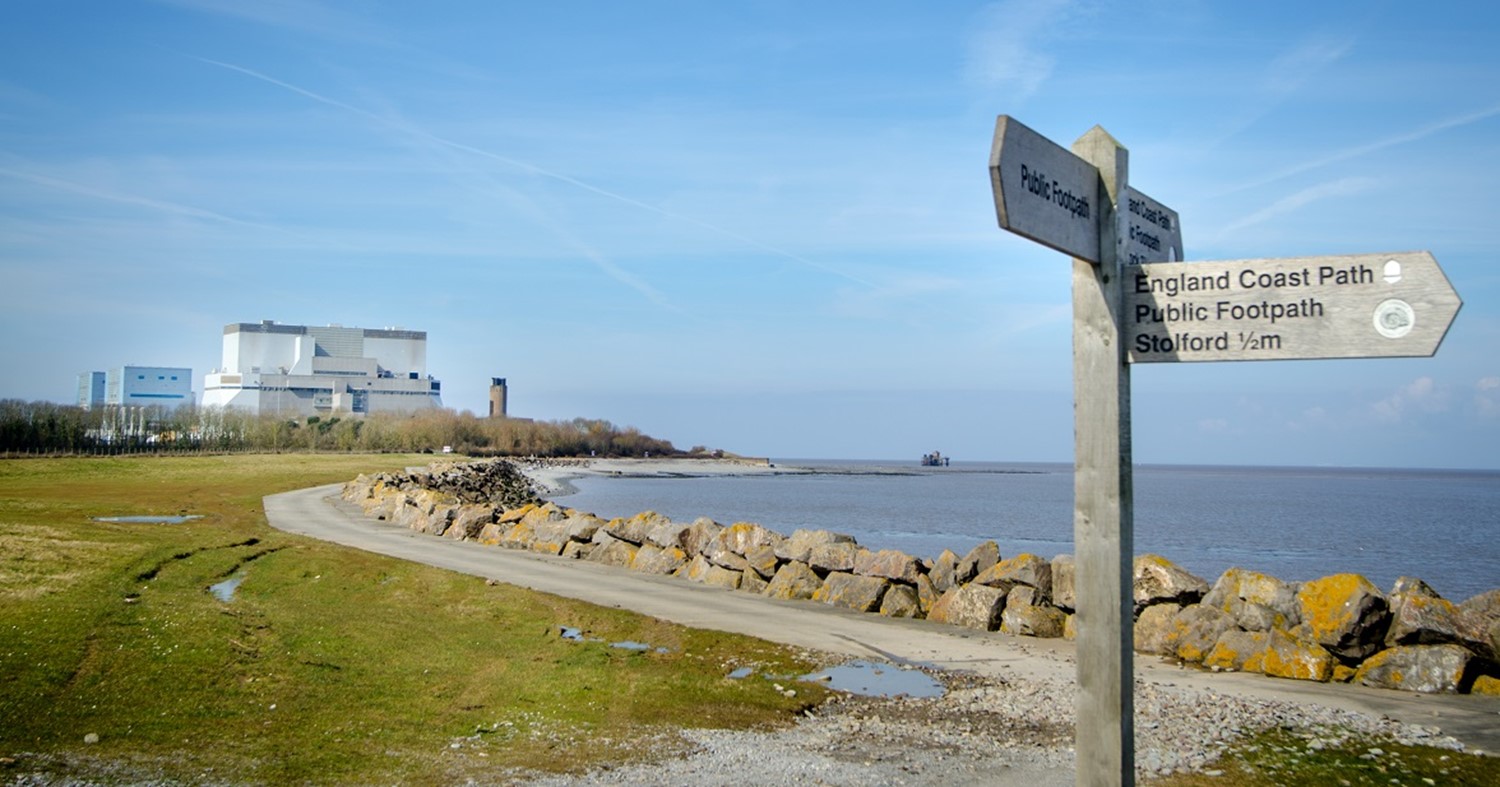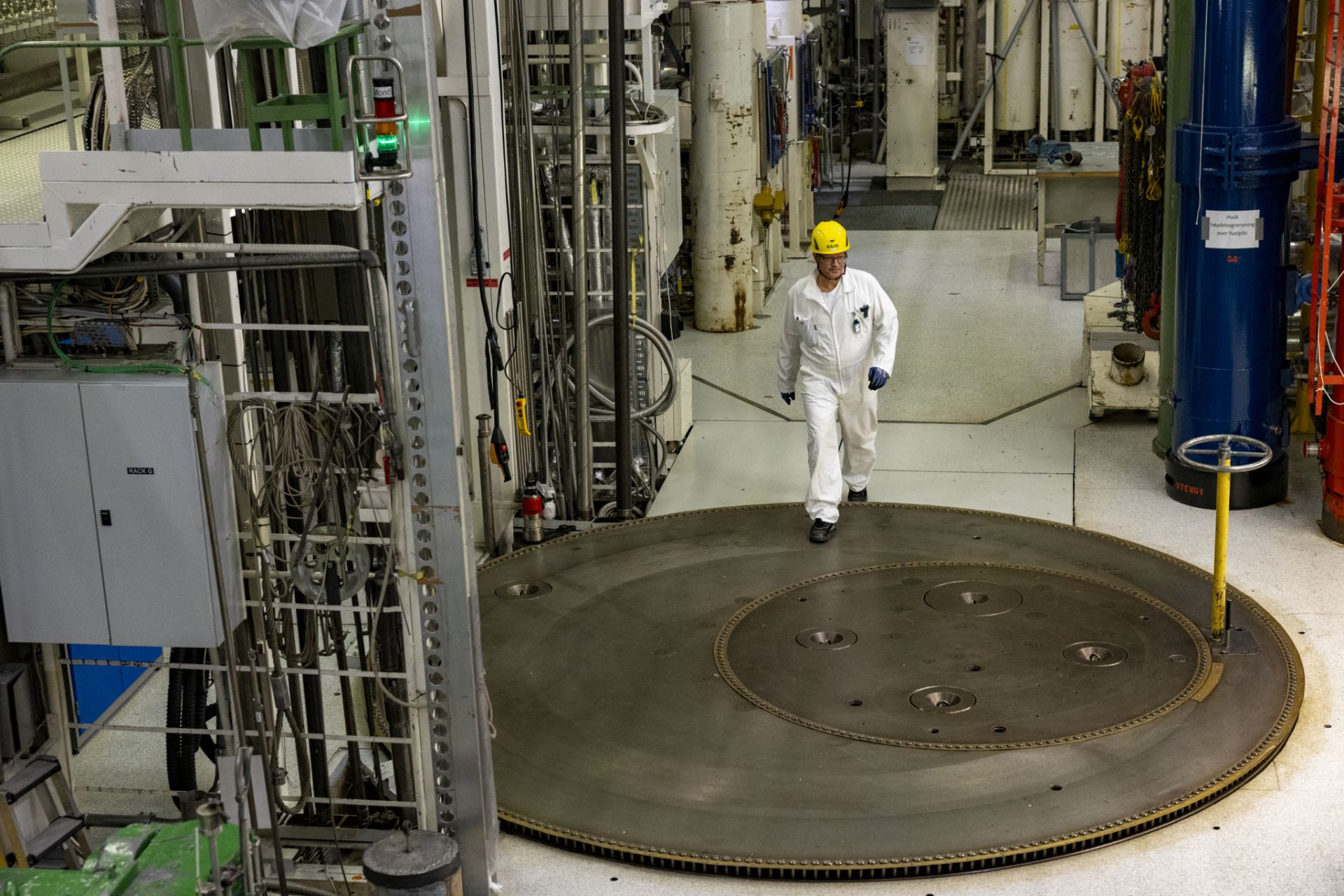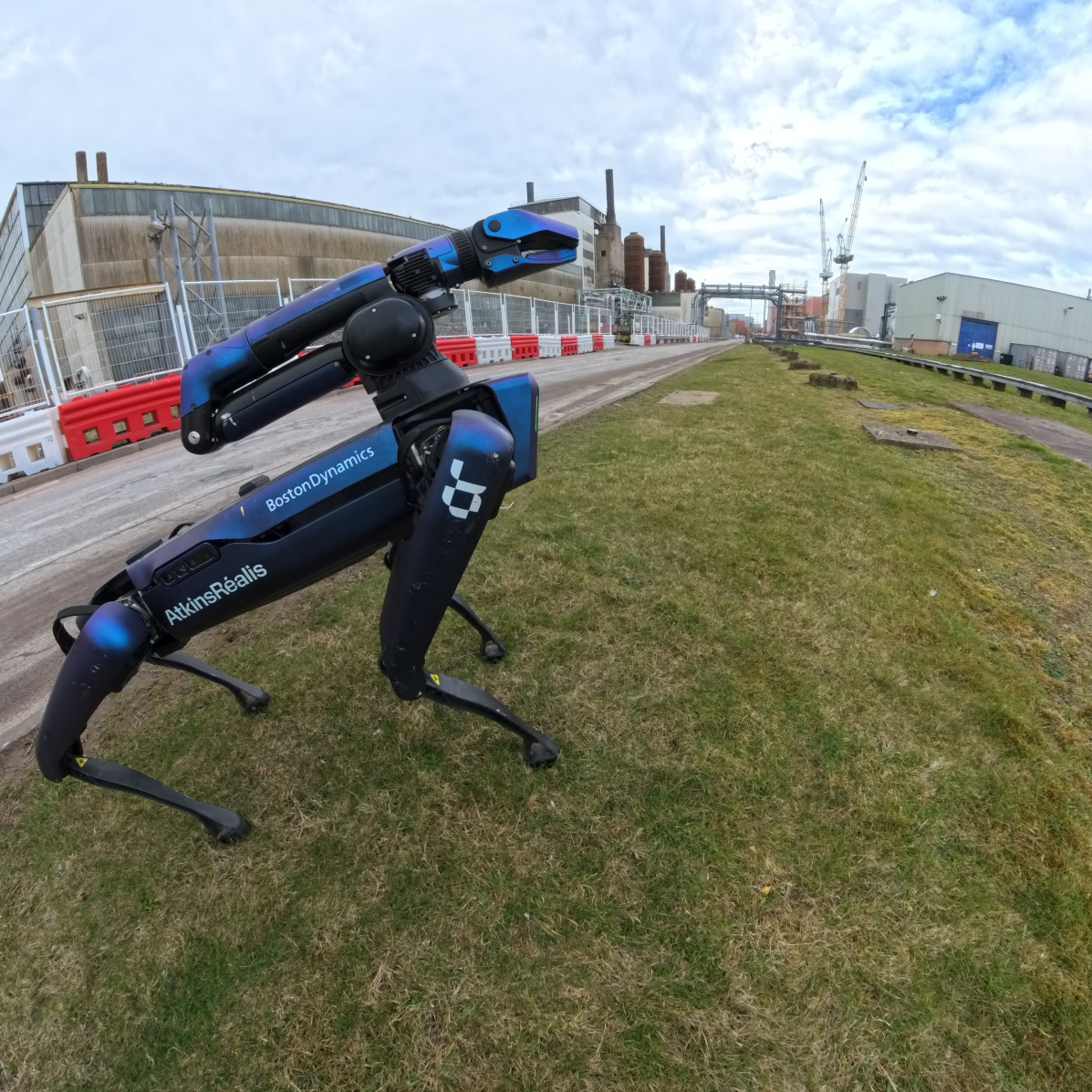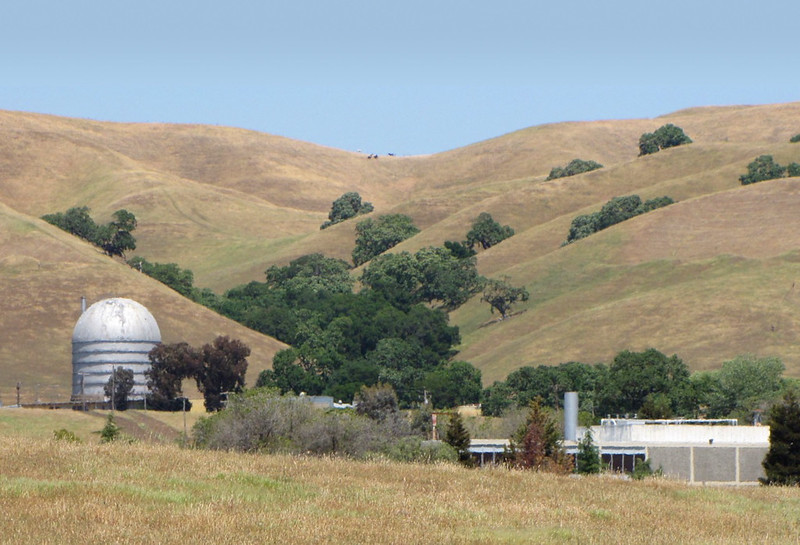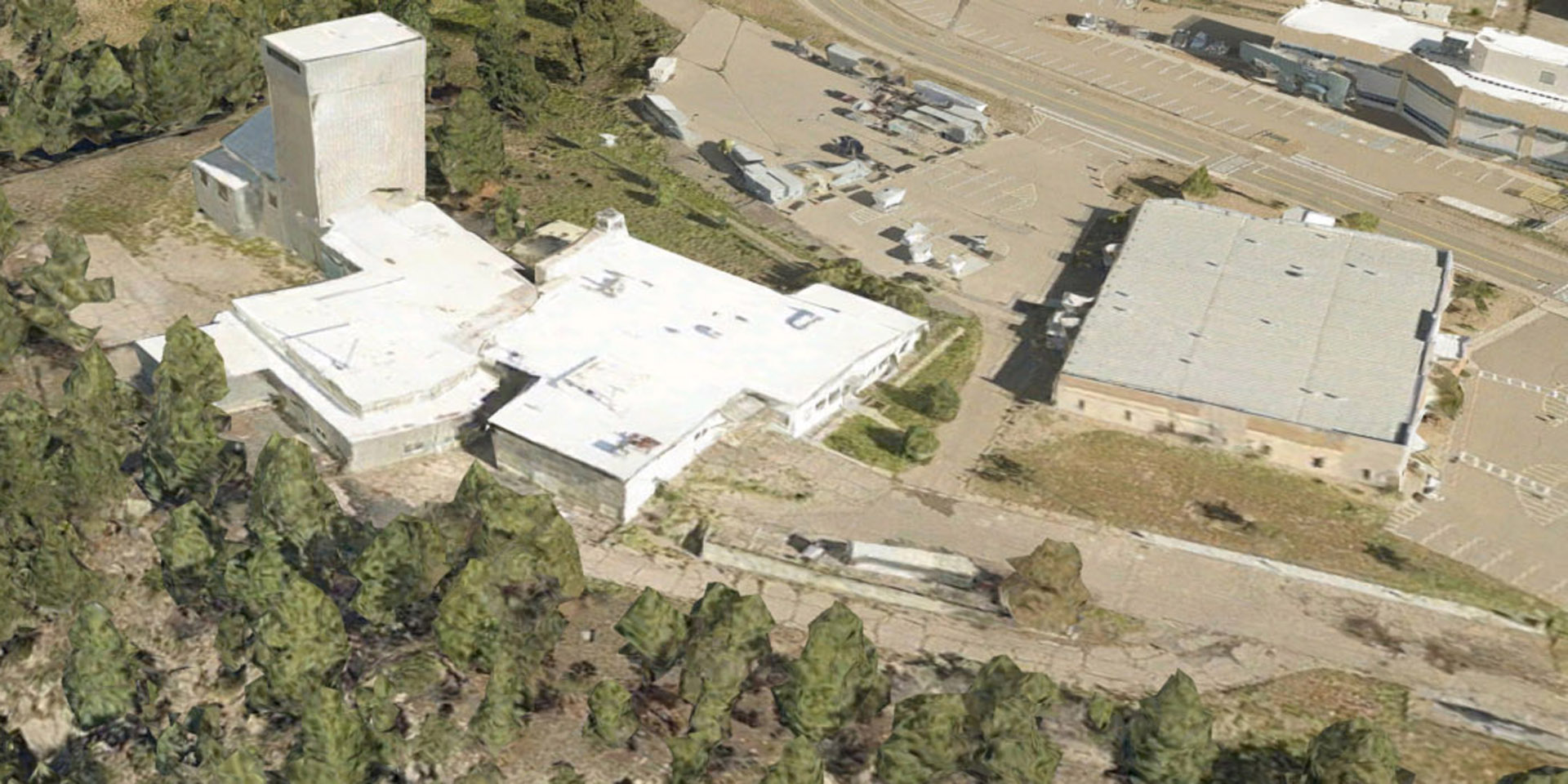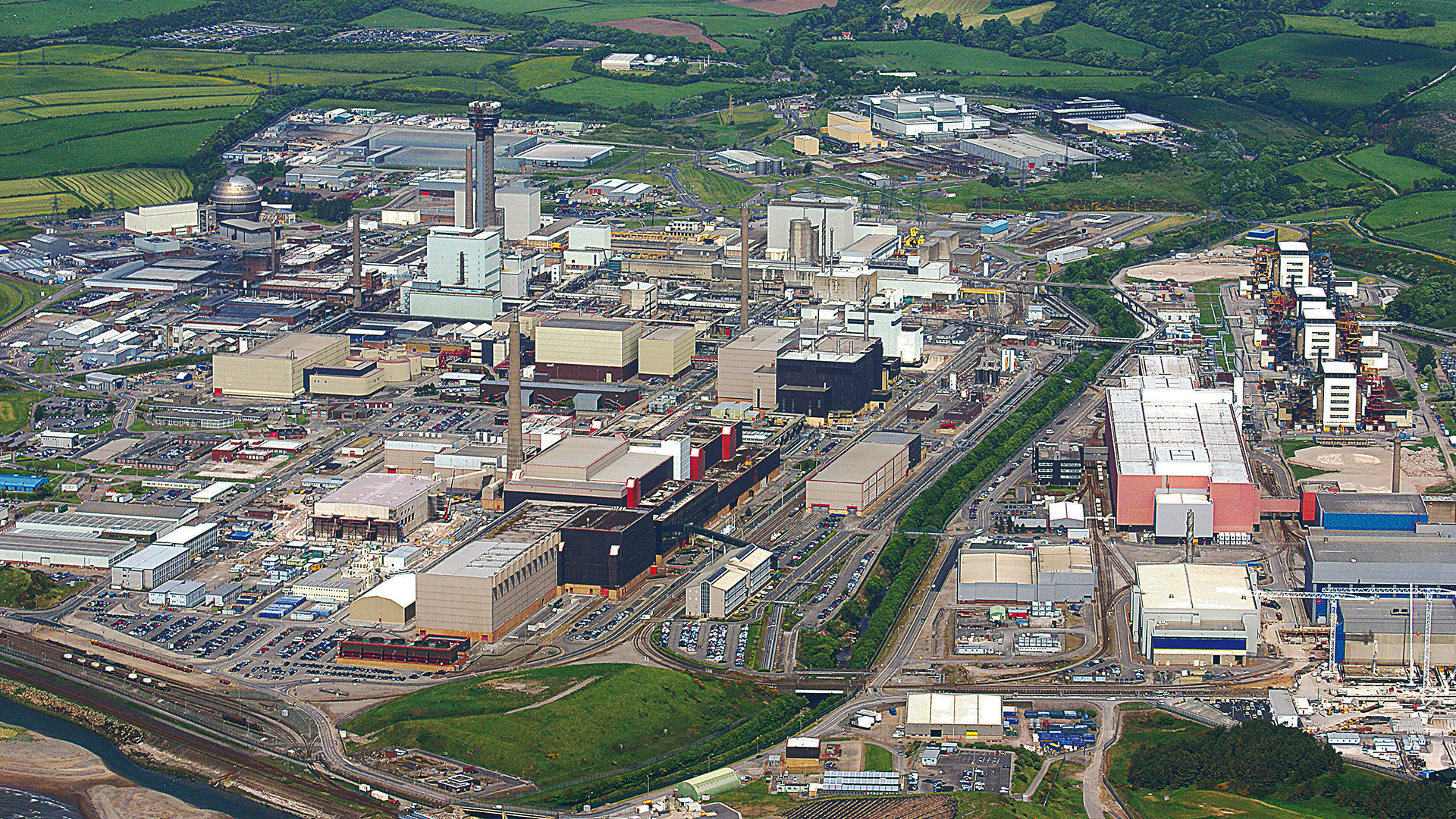EDF Energy’s Hinkley Point B nuclear power plant, in Somerset, England. (Photo: EDF Energy)
The U.K. government’s Office for Nuclear Regulation has granted EDF Energy formal consent to decommission the Hinkley Point B nuclear power plant in Somerset, England. The two-unit advanced gas-cooled reactor was permanently shut down in August 2022, and site owner EDF applied to ONR for decommissioning consent in August 2024.
The Sellafield site in the U.K. (Photo: Sellafield Ltd.)
Sellafield Ltd., the site license company overseeing the decommissioning of the United Kingdom’s Sellafield nuclear site in Cumbria, England, has awarded a 15-year framework contract worth up to £4.6 billion ($6 billion) to support “high hazard risk reduction programs” at the site.
Company and JAEA representatives celebrate the signing of the D&D contract. (Photo: Babcock International)
U.K.-based Cavendish Nuclear, a subsidiary of Babcock International, will work with Amentum on the next phase of work supporting the decommissioning of Japan’s Monju prototype fast reactor under a contract awarded by the Japan Atomic Energy Agency.
Sellafield Ltd.’s Euan Hutton (left) and TEPCO’s Akira Ono extend a cooperative agreement between the two companies. (Photo: TEPCO)
The U.K.’s Sellafield Ltd. and Japan’s Tokyo Electric Power Company have pledge to continue to work together for up to an additional 10 years, extending a cooperative agreement begun in 2014 following the 2011 tsunami that resulted in the irreparable damage of TEPCO’s Fukushima Daiichi plant.
A 1960s Electrolux vacuum cleaner was discovered in Sellafield’s Pile Fuel Cladding Silo. (Photo: Sellafield Ltd.)
A 1960s Electrolux vacuum cleaner was among the more unusual items workers removed from one of the world’s oldest nuclear waste stores at the United Kingdom’s Sellafield nuclear site.
Workers with UCOR perform sampling and deactivation tasks in the basement of Beta-1 at the Y-12 National Security Complex at Oak Ridge. (Photo: DOE)
The Department of Energy’s Office of Environmental Management said that crews with the Oak Ridge Office of Environmental Management (OREM) and its cleanup contractor UCOR are preparing to demolish another deteriorating Manhattan Project–era building at the Y-12 National Security Complex at Oak Ridge, Tenn.
The reactor hall of the Halden research reactor in Norway. (Photo: IFE)
The government of Norway has granted the transfer of the Halden research reactor from the Institute for Energy Technology (IFE) to the state agency Norwegian Nuclear Decommissioning (NND). The 25-MWt Halden boiling water reactor operated from 1958 to 2018 and was used in the research of nuclear fuel, reactor internals, plant procedures and monitoring, and human factors.
Spot, the robot dog, on-site at Sellafield. (Photo: AtkinsRéalis)
Sellafield Ltd. and AtkinsRéalis have successfully operated a robotic dog from a remote location in what might be the first time such an operation has happened at a nuclear licensed site, according to the companies in a March 18 press release.
The Vallecitos Nuclear Center site in northern California. (Photo: NRC/Don Sleeter)
NorthStar Group Services has announced that it has closed on an agreement to acquire ownership of the Vallecitos Nuclear Center from GE Vernova and GE Hitachi Nuclear Energy for NorthStar's nuclear decontamination, decommissioning, and environmental site restoration.
The Ion Beam Facility, center, at Technical Area 03 at LANL. (Photo: DOE)
Work has started at the Department of Energy’s Los Alamos National Laboratory in New Mexico to deactivate, decommission, and remove the Ion Beam Facility, which played a role in research and experiments that helped develop the nation’s nuclear arsenal during the 1950s and 1960s.
November 15, 2024, 7:03AMNuclear NewsErhard W. Koehler and Anne Jennings N.S. Savannah, the first commercial nuclear-powered cargo vessel, en route to the World’s Fair in Seattle in 1962. (Photo: U.S. National Archives)
It’s safe to say that readers of Nuclear News are familiar with decommissioning. It’s even safe to assume that experienced decommissioning practitioners are familiar with the National Historic Preservation Act (NHPA) and how it applies to typical projects. What’s different about the N.S. Savannah is that the entire project site is a historic property—and in fact, is a federally owned National Historic Landmark (NHL), a status that confers the highest level of protection under law. Federal owners of NHLs are obligated to minimize harm in both planning and actions. Distilled to its salient point, no federal owner of an NHL should destroy it if there’s a reasonable alternative. That level of preservation is not what we normally associate with nuclear decommissioning. This perfectly summarizes the challenges, and opportunities, that decommissioning Savannah offered. The story of how the Maritime Administration (MARAD) managed these two otherwise contradictory processes showcases how historic preservation and decommissioning can positively intersect, provides a pathway for other historic facilities, and further adds to the already illustrious history of one of our nation’s significant 20th century landmarks.
The West Valley Demonstration Project in western New York. (Photo: DOE)
The Department of Energy’s Office of Environmental Management announced it has awarded a 10-year, $3 billion contract to West Valley Cleanup Alliance (WVCA) for decommissioning and demolition work at the West Valley Demonstration Project in western New York. WVCA is a newly formed limited liability company made up of BWXT Technical Services Group, Jacobs Technology, and Geosyntec Consultant. Teaming subcontractors include Perma-Fix Environmental Services and North Wind Portage.
An aerial photo of Three Mile Island nuclear power plant. (Photo: Constellation)
The pursuit of returning two of the country’s retired nuclear plants into service is not only unusual—it is unprecedented and promises to make history.
That’s according to a piece coauthored by former assistant secretary for nuclear energy Katy Huff in the Bulletin of the Atomic Scientists regarding plans from Holtec and Constellation to restart Michigan’s Palisades plant and Pennsylvania’s Three Mile Island Unit 1, respectively.
The Ignalina nuclear power plant in Lithuania. (Photo: INPP)
Chantilly, Va.-based Amentum has been awarded a 7-year contract estimated to be worth €5.5 million (about $6 million) to consult on the dismantling of steam drum separators in Units 1 and 2 of Lithuania’s Ignalina nuclear power plant. Once the country’s largest generator of electricity, Ignalina was permanently shut down in 2009 and the plant’s two RBMK-1500 reactors are expected to be fully decommissioned by 2038.
The Sellafield nuclear site in Cumbria, England. (Photo: NEA/OECD)
Despite progress made over the past years, the United Kingdom’s Nuclear Decommissioning Authority (NDA) has not seen an adequate return on investment in cleaning up the Sellafield nuclear site on England’s Cumbria coast, according to a new report by the U.K.’s National Audit Office, which scrutinizes government spending.
